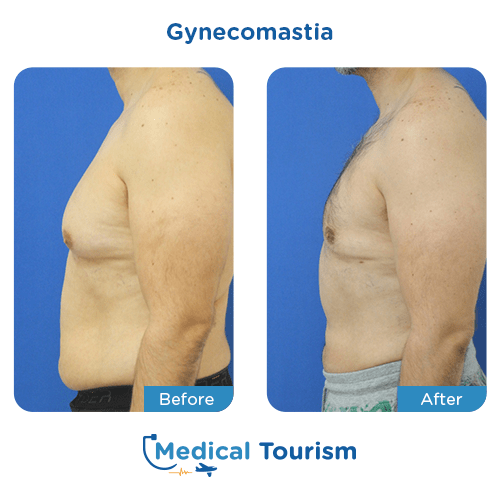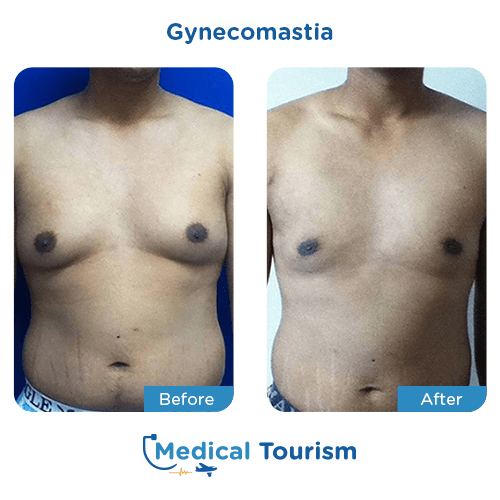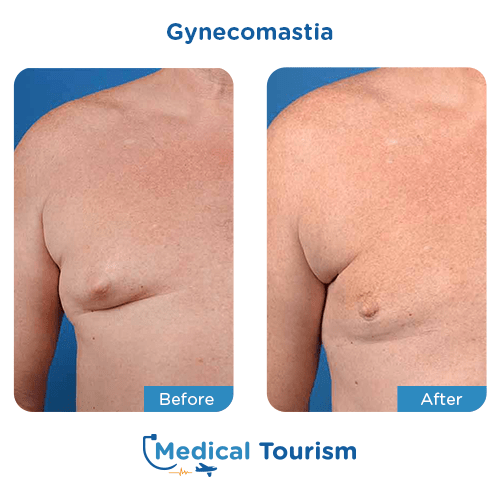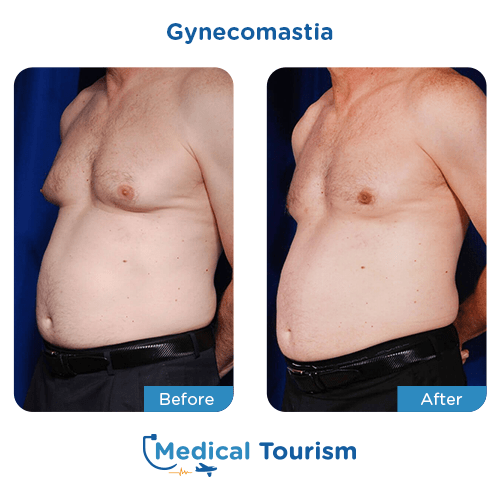The best board-certified doctors abroad
Gynecomastia information and international destinations
This surgical procedure, also called male breast reduction, removes the excess fat and tissue in the chest area to reduce and restore its size and shape. Depending on the patient, it may be a same day procedure.
The purpose of this procedure is to eliminate excess fat and glandular tissue from the chest, resulting in a flatter and firmer chest. There are two primary techniques used to achieve the desired outcome, which are liposuction and excision. Some patients may require a combination of both techniques to achieve more noticeable results.
Liposuction
This procedure is used for patients who have excess fat in their chest area. The surgeon uses a thin tube called a cannula to suction out the fat tissue. This technique is called liposuction and is used when there is no excess glandular tissue to remove.
Excision
This technique is typically used for patients who have excess glandular breast tissue or skin. During the procedure, small incisions are made to remove the excess tissue, resulting in a flatter and firmer chest.
Get professional attention and excellent results in gynecomastia in any of our top destinations!
Benefits
Minimal scarring
Customized for each patient
Boosts self-esteem and confidence
Enhances the appearance of the chest
Customized for each patient
Boosts self-esteem and confidence
Enhances the appearance of the chest
Gynecomastia
Procedure:
1 hr.
Hospital stay: 1 - 2 hrs.
Cleared to fly: 8 - 10 days
Hospital stay: 1 - 2 hrs.
Cleared to fly: 8 - 10 days
After surgery
Out of town patients’ follow-ups are scheduled with the plastic surgeon after 5 - 7 days of gynecomastia surgery. Patients are clear for flying after 8 - 10 days from gynecomastia surgery.
Note: Follow-ups can be arranged as face-to-face or virtually. If needed, you can go to your primary care physician to remove sutures or get medication adjustments.
Before and after
View before and after pictures from real patients.

View more


Locations
Select the city of your choice to seethe doctors profile.
Dr. Erick Almenárez
View more

Gynecomastia frequent questions
Get answers to our most frequently asked questions and what to expect after the surgery.
Do I qualify for breast reduction surgery?
Candidates who have enlarged breasts and have found other treatments to be ineffective are eligible for the surgery. We suggest that you consult with one of our top specialists for an assessment to determine your eligibility for the surgery.
How will I know which procedure is best for me?
Your doctor will discuss with you and determine which procedure will help you achieve the desired results. While some doctors may recommend only one technique, others may suggest a combination of both procedures depending on your specific needs.
Will I feel pain during the procedure?
No, you will not feel any pain during the procedure. However, after the surgery, you may experience some mild discomfort and swelling. If needed, your specialist will provide you with pain medication to manage any discomfort.
What is the expected recovery time?
The recovery time for both liposuction and excision techniques are similar, with most swelling subsiding after six weeks. The final results will be visible within six months after the surgery, with ongoing improvement.
Can I expect the results to last permanently?
Though results of this procedure are usually permanent, changes in weight can cause the re-accumulation of fat. Additionally, smoking or the use of certain medications that affect skin elasticity can also affect the results.
Disclaimer: This information does not reflect the medical advice from our clinics. All cases are different and this treatment may not suit you. Always refer to a medical professional with the certification and experience. All of our physicians are fully qualified to perform these procedures. For more information and diagnosis contact one of our top specialized clinics.
In all medical procedures, there are chances of complications, the specialist will provide you detailed information about the risks of the procedure, talk to the specialist directly.
In all medical procedures, there are chances of complications, the specialist will provide you detailed information about the risks of the procedure, talk to the specialist directly.





